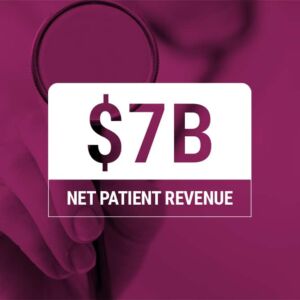The MDaudit team was recently able to sit down with Laura McNamara, MBA, MS, CHCSB-CPMP & SB-ACO, Compliance Officer at Stony Brook Medicine University Physicians, to discover how she and her team have benefited from implementing MDaudit into their organization.
- How would you describe the value that MDaudit delivers?
The overall value of MDaudit lies in the ease of use and all the features it provides. Most importantly, however, the most significant value is the freedom from being paperbound. Migrating from paper dependence to a one-stop digital platform has done wonders for our work product. We can run reports, and historical data, look at specific risk areas, bell curves, and data mine, all in our efforts to mitigate organizational risk continually.
- How does the MDaudit team support you in your overall goals?
We meet with the MDaudit team at least quarterly and more often when requested. Our meetings are always valuable, as the team provided a dashboard and reports showing us how we use the system. They also offer recommendations for optimizing MDaudit, giving us examples of best practices and scenarios from other organizations. Their customer service is top-notch – always friendly and consistently delivering with a smile.
- Who across your organization benefits from MDaudit and how?
Everyone across the organization for whom our department supports benefits from MDaudit because they are our stakeholders. Primarily though, our team receives the biggest benefit because they can produce a high-quality work product. This includes our Compliance Analysts, who pull data and reports for the Auditors and Specialists. Who, in turn, audit documentation and MDaudit to execute their work. Our Manager performs data mining to identify risks related to Risk Adjustment Factor Scoring. And our Director of Compliance Operations oversees all the work performed by the team. She also works with the Compliance Officer to perform benchmarking and bell curve analysis used to report to organizational leadership.
- In what ways does MDaudit scale to meet the needs of an organization of your size in particular?
Since adopting MDaudit, we have expanded the scope of work by almost double. We have added risk-focused auditing based on data pulled from MDaudit. We have also launched a Risk Adjustment arm in our department with audits of Hierarchal Condition Categories (HCC) codes. This allows us to continue to identify high-risk areas based on the OIG Workplan, our risk assessment, etc., in a timely fashion.
- How have MDaudit integrated workflows and automated data ingestion impacted you and your team?
MDaudit’s methodology was a changing point for our team. We have increased productivity from the creation of the audits to the execution of the audits themselves. One specific impact area is that we now rely on automated workflows for provider re-audits. Plus, our team has benefited from accessing the MDaudit learning modules, which have helped streamline their workflow processes.
Anything you’d like to add?
Overall, we have been quite happy with MDaudit. From the customer service to the product itself, we have been quite satisfied and are glad we did not hesitate to onboard this product.






